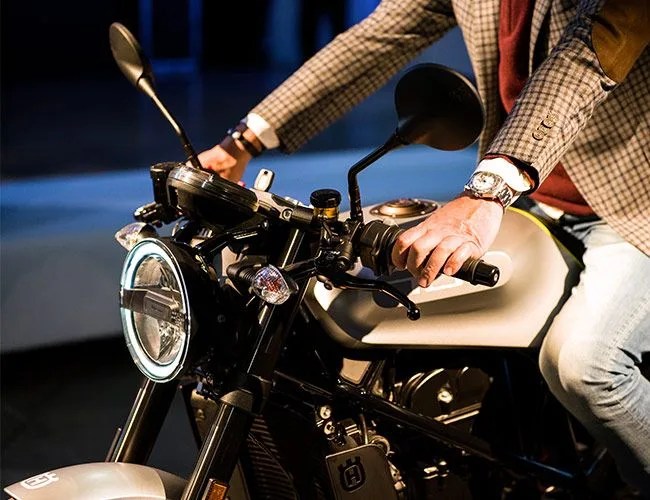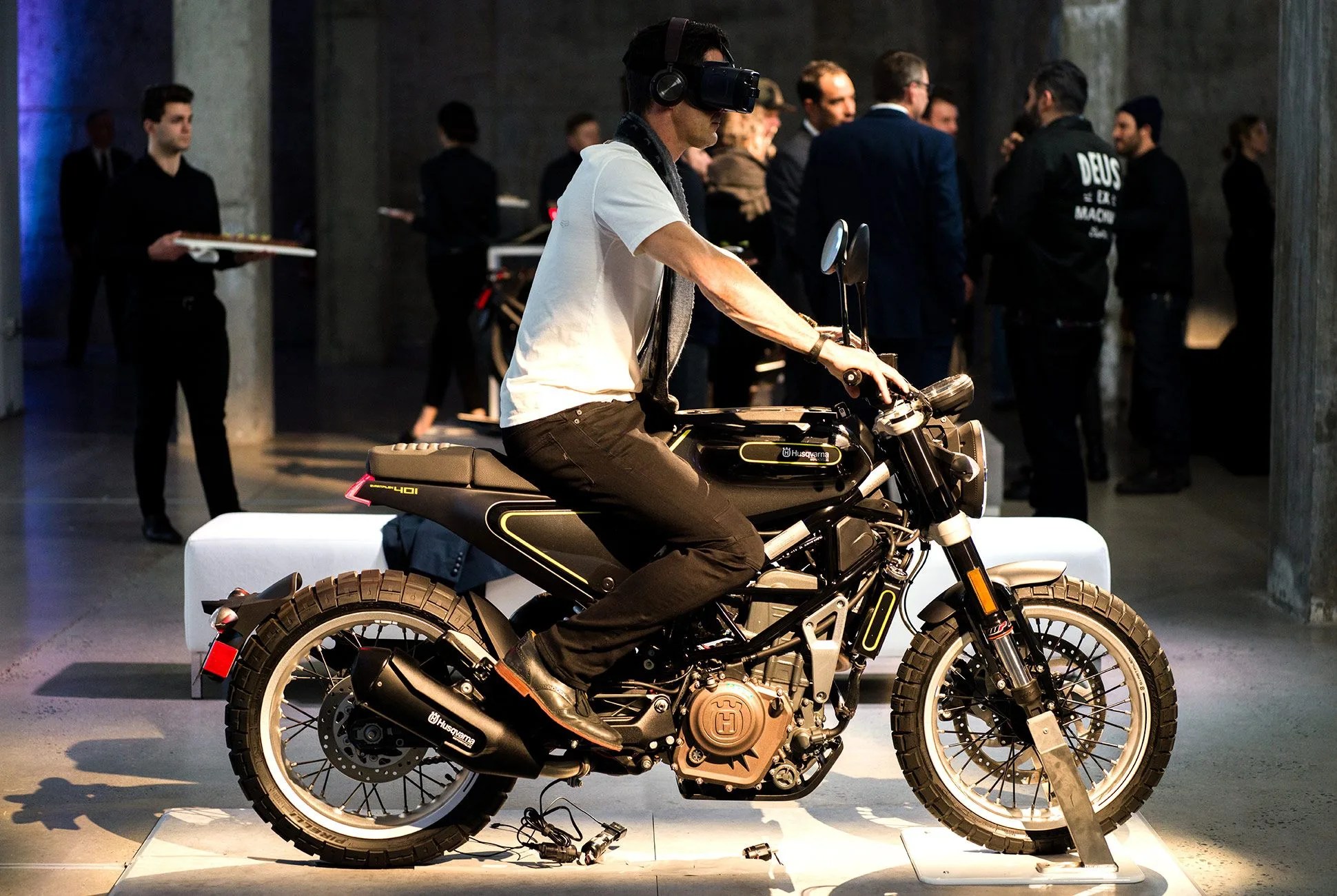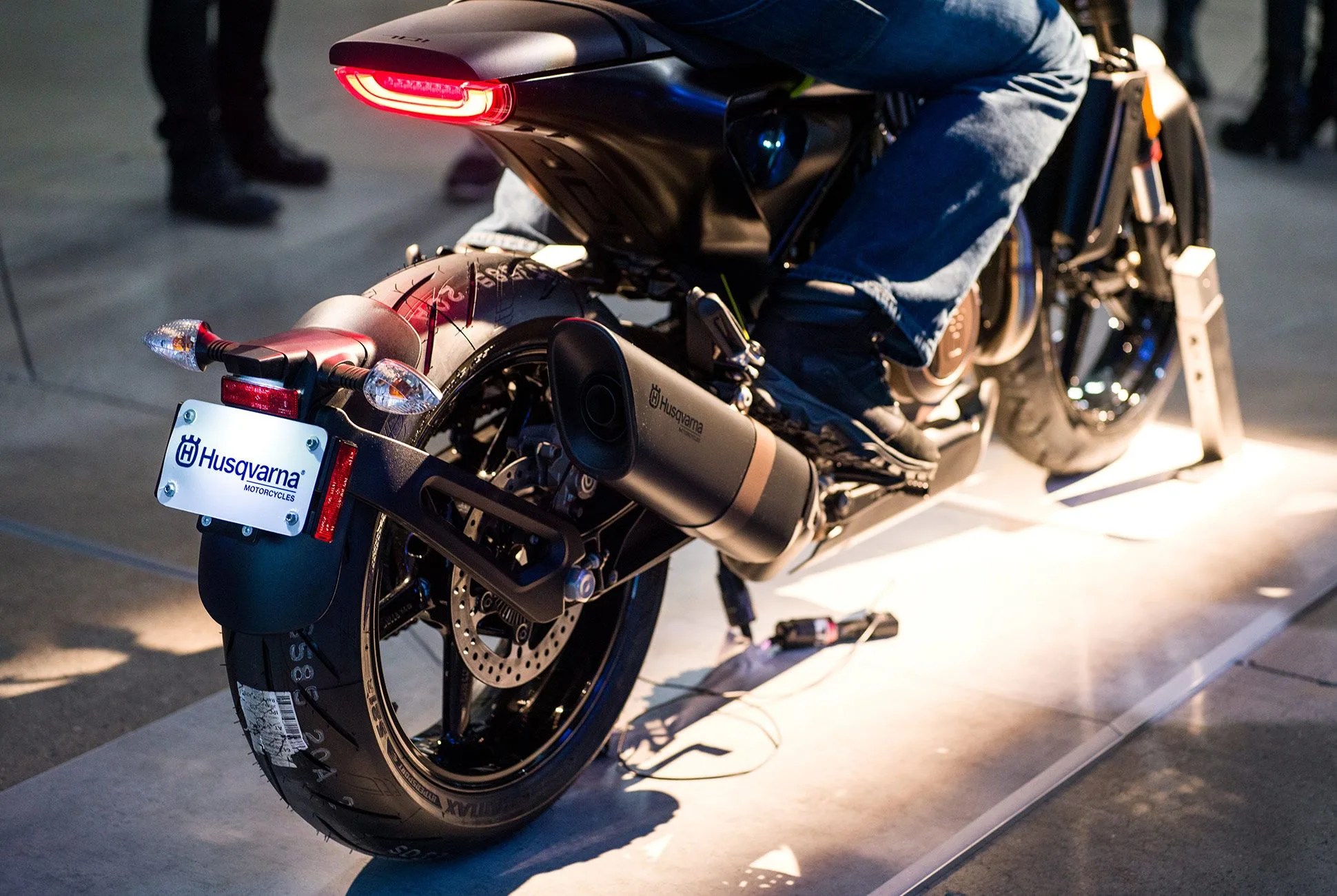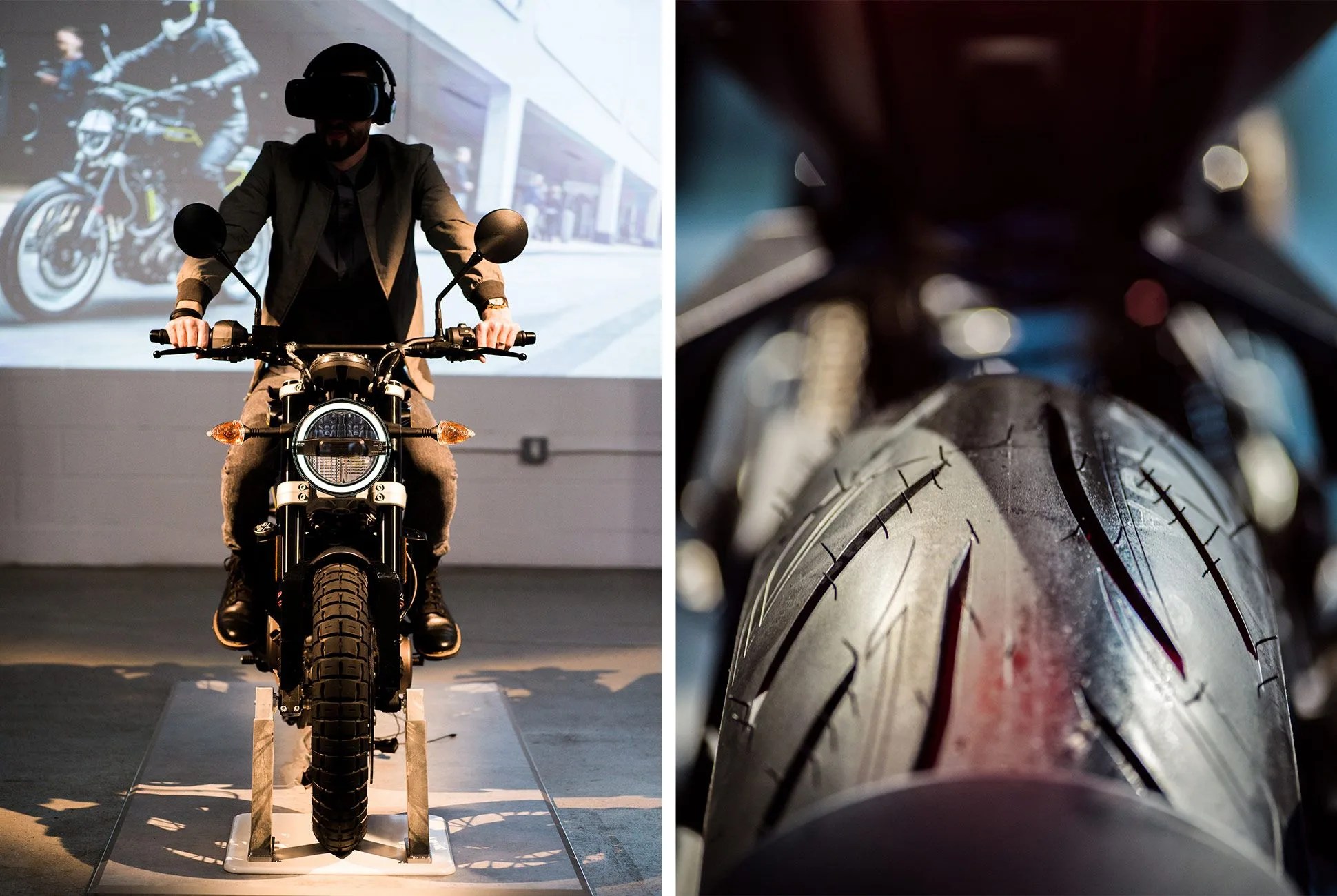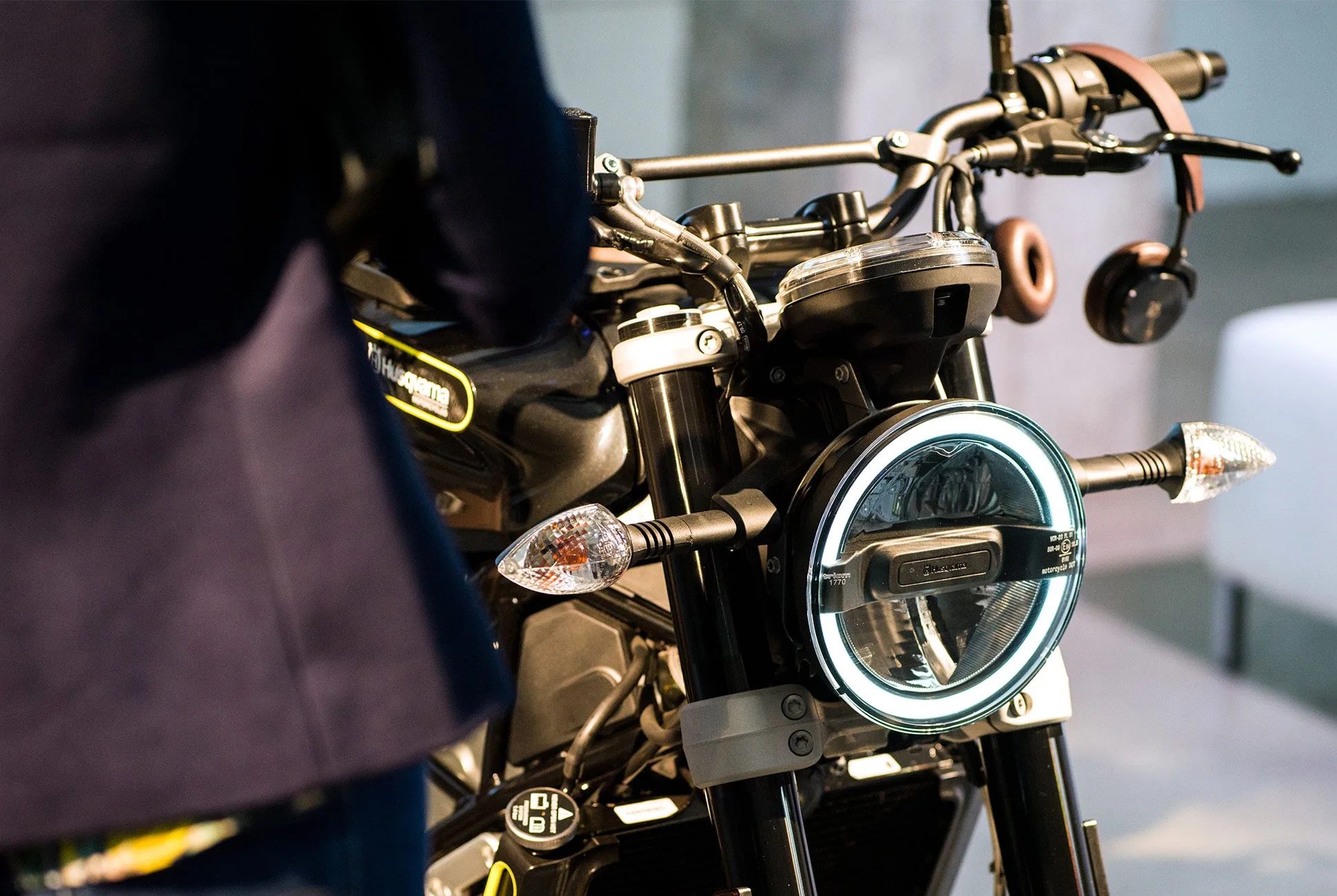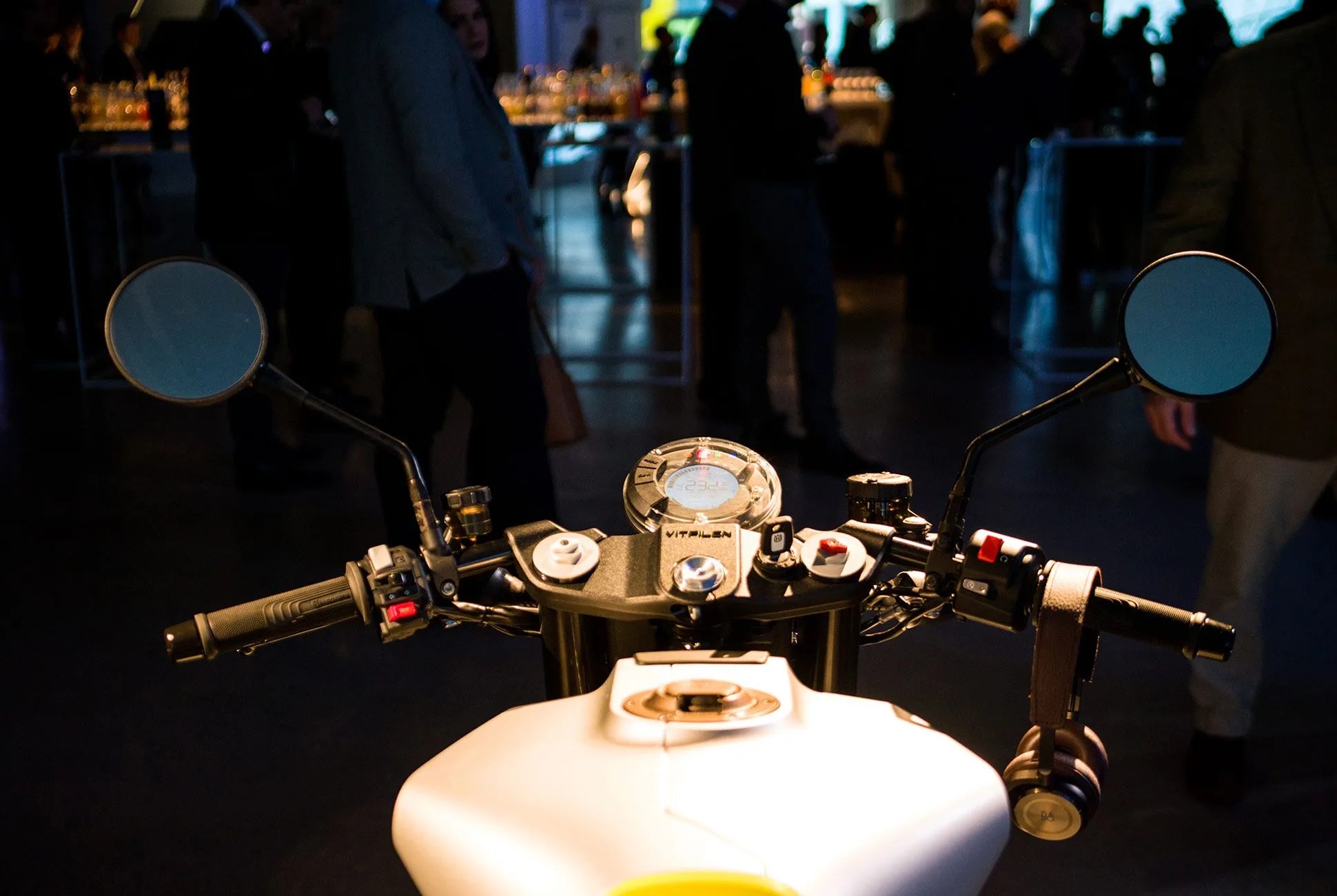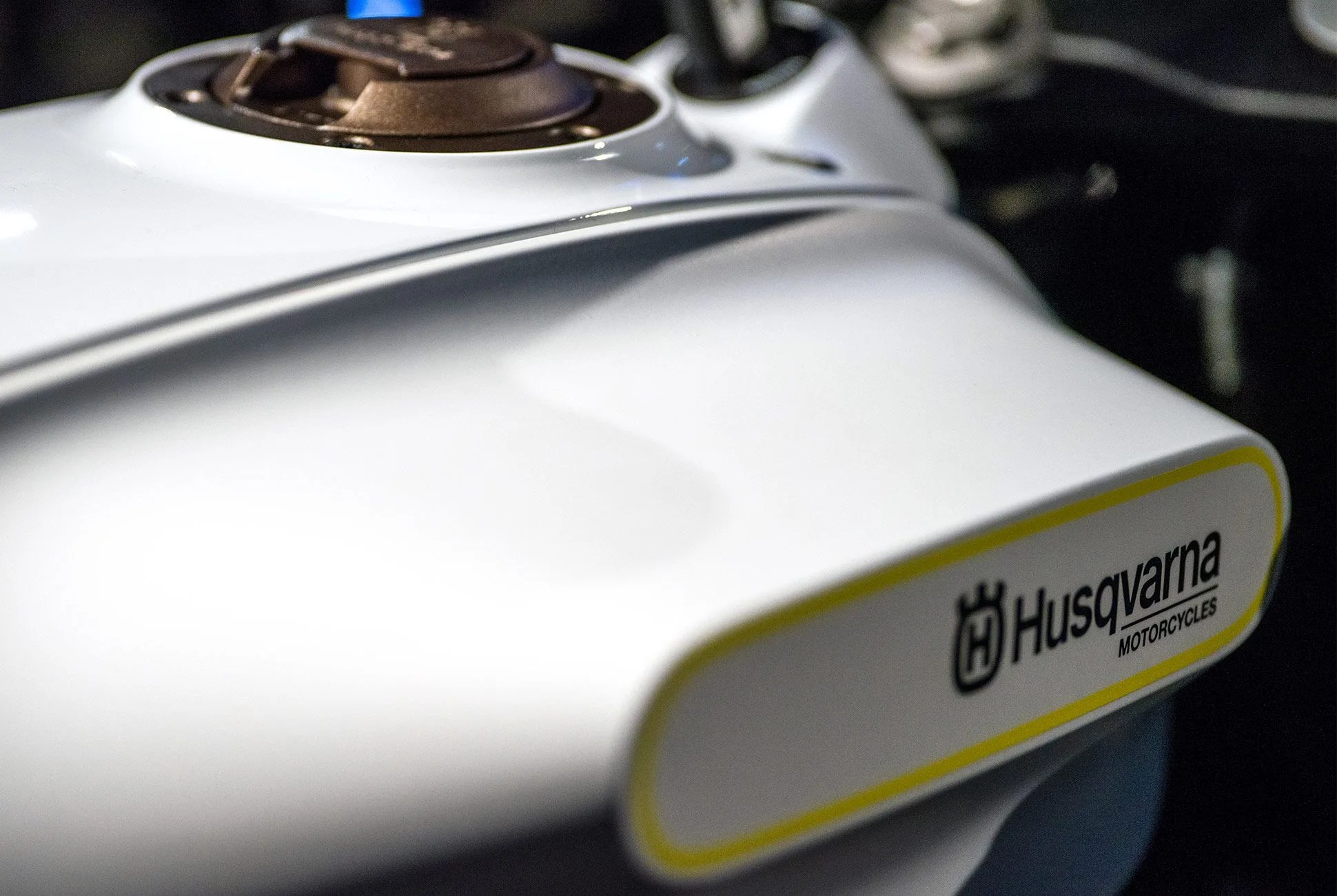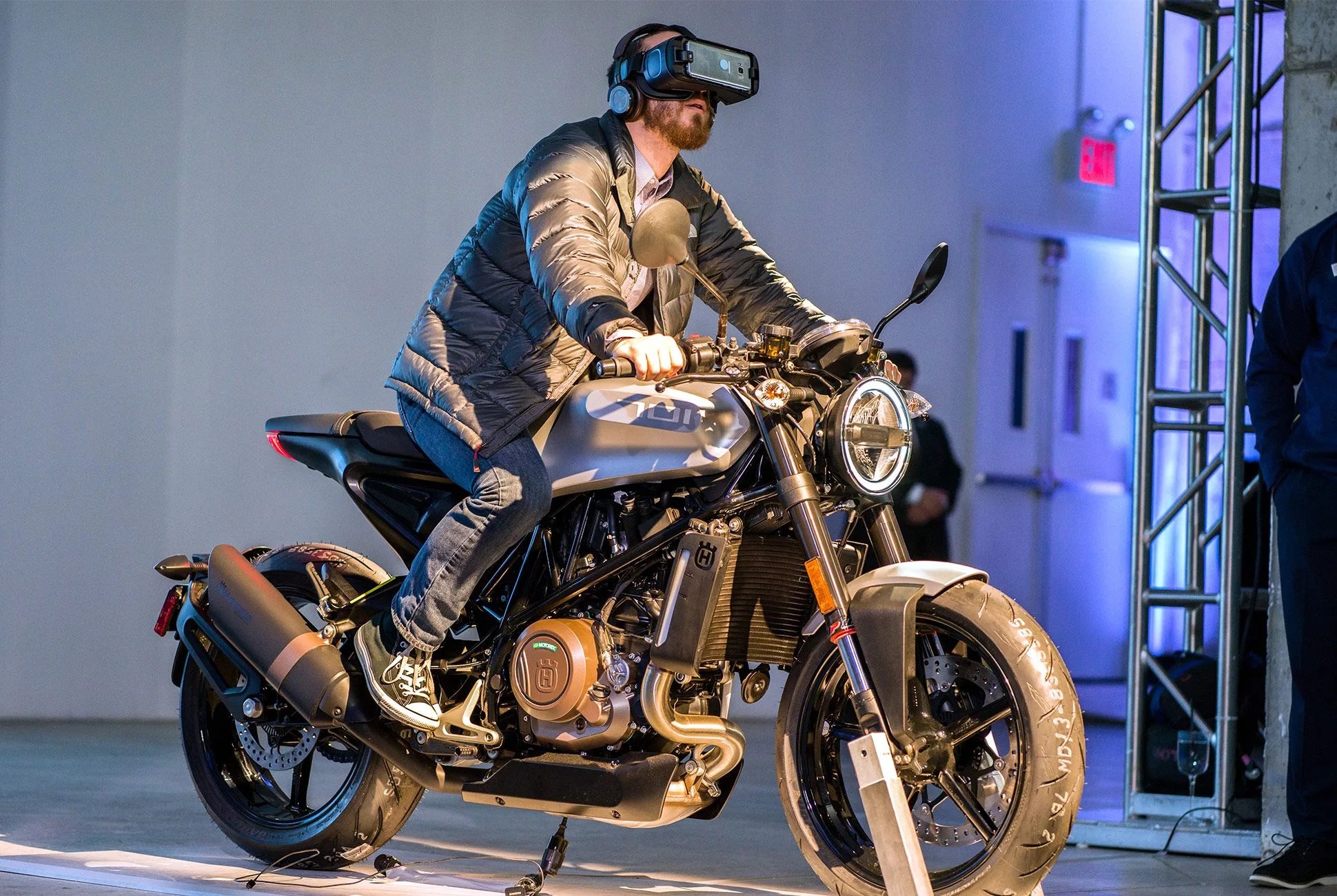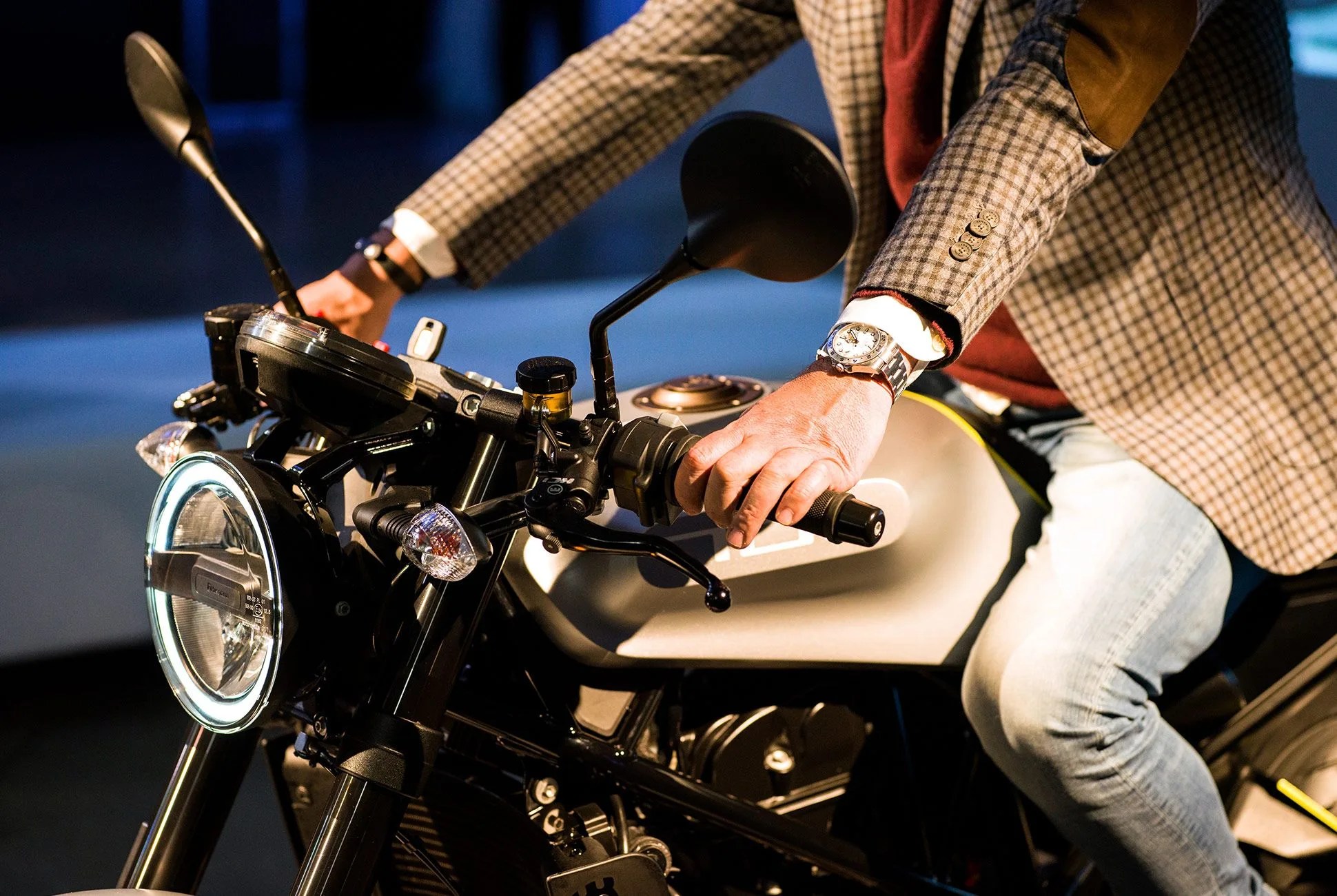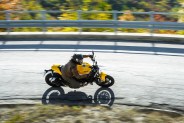9 photos
In the United States, the Husqvarna brand is typically associated with chainsaws, snow blowers, and lawn tractors, usually in their trademark orange. Characteristically honorable Scandinavian products, all. But motorcycle enthusiasts — at least those who favor the motocross racing side of two-wheeled adventurism — revere the brand for other reasons, namely the lock on off-road racing victories it has held for decades. Though long separated from its original Swedish roots — pinballing since 1985 from Italian (Cagiva) to German (BMW Motorrad) to Austrian (KTM) ownership — the manufacturer has sustained its motorcycle heritage, something KTM now intends to parlay into victories in the street-bike market, as well.
Husqvarna announced its re-entry into that segment in 2014, and on February 22, in New York City, it unveiled the production versions of its first all-new street bikes since 1965, the Svartpilen and Vitpilen 401 (White Arrow) — along with the performance-enhanced Vitpilen 701. Though owned and manufactured in Austria, the single cylinder, four-stroke bikes retain — and in fact capitalize on — their Scandinavian origins, via a refined design aesthetic that’s both traditionally minimalist yet substantial enough to avoid feeling like a skin-and-bones naked bike, though both are technically that.
They’re inspired by the company’s 1955 Silverpilen (Silver Arrow), a dual-purpose road and off-road machine, yet have distinctly modern interpretations. KTM’s longstanding design firm, Kiska, infused the bikes with lines that are by turns strictly geometric — such as the precisely parallel and horizontal lines of the seat, fuel-tank, and handlebars on the Svartpilen 401 — to surprisingly sculpted for a street bike, such as the logo protrusions on the fuel tanks in all three bikes, but most profoundly in the Vitpilen 701. There are also splashes of color, but not on the body panels where you’d expect it. Rather, you’ll find clean yellow lines around the seat, or etched into the radiator sides or the frame. The engine also sports a bronze splash that repeats in a band around the exhaust, and the suspension spring buried inside the bikes gleams a brilliant white. The coloring neither overwhelms nor detracts, but it adds distinction in discrete places, the kind you don’t typically find in motorcycles. It also contributes a modern flair. That’s the pure Scandinavian design influence at work.
The Svartpilen is the more rugged of the bikes, with knobby tires, a protective skid plate, beefier foot pegs and a more upright seating position. The Vitpilens are more streamlined, with slightly crouched seating positions, curved handlebars and smoother road rubber. One of the qualities they all share, though — and it’s a design victory as much as an engineering one — is the look of lightness. These ultra-approachble bikes all weigh less than 350 lbs, but they also possess a visual airiness unmasked by excessive paneling or general showboating. For that reason, they all look as if they’re floating even when hunkered down on the pavement. It’s a unified effect that ties them together while separating them from the pack. We can’t wait to see all three in action.
